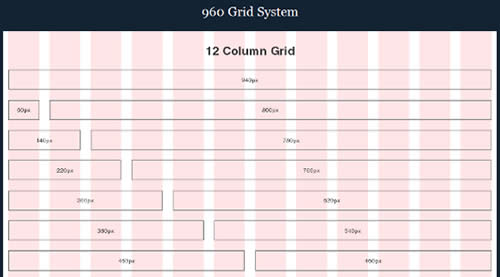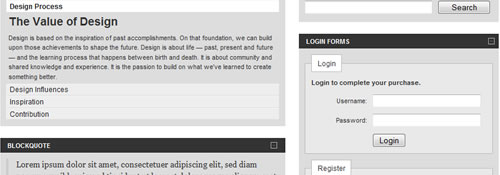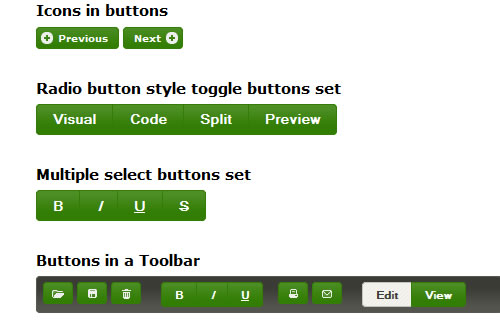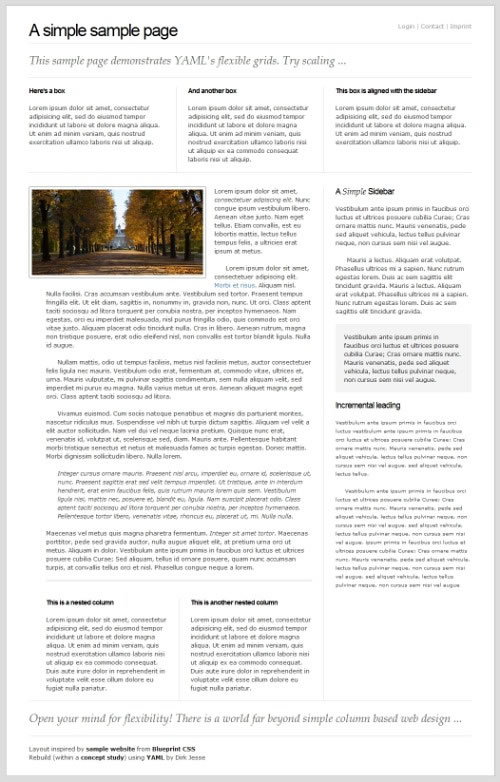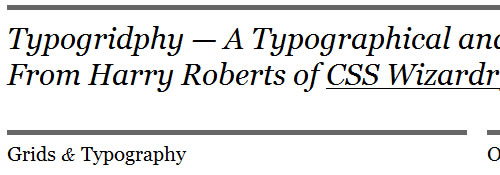the powerful CSS Frameworks will help you to design adaptive Responsive Web Design , these tutorial and examples will guide you to design your site fullt optimized for desktop , tablet , mobile and print
In today’s post we present an overview of the 5 most popular CSS Frameworks;showcasing handpicked tutorials for using each of them among other useful tools and resources you will definitely find useful and time-saving.
The 960 Grid System is an effort to streamline web development workflow by providing commonly used dimensions, based on a width of 960 pixels. There are two variants: 12 and 16 columns, which can be used separately or in tandem. The 960.css file itself is only 3.6 KB compressed.
Tutorials Explaining how to use 960 CSS Framework
-
“Jeffrey Way” takes a close look at the 960 CSS Framework, explaing the pros and cons of using it. He also takes us step by by step and create a simple “12 column” layout with a simple header and two column structure. Most important tip here is : you must assign a class to each div. Naming conventions require that that the class name begins with “grid_” and ends with the number of columns needed.
-
Stefan Vervoort takes the heavy work for you and explains the basics of this framework so you can start developing with 960 pretty fast. Basics principles explained here include: not to edit 960.css, Loading the grid, Containers, Grids / Columns, Margins and styling.
Another post by Stefan where he solves some of the problem he faced while working with this framework.
-
The Fluid 960 Grid System templates have been built upon the work of Nathan Smith and his 960 Grid System using effects from the Mootools JavaScript library.
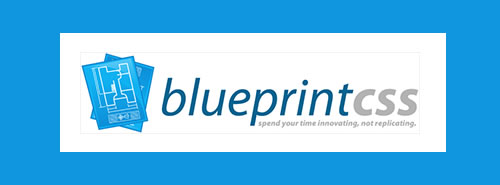
Blueprint is a CSS framework, which aims to cut down on your CSS development time. It gives you a solid CSS foundation to build your project on top of, with an easy-to-use grid, sensible typography, nice-looking forms and even a stylesheet for printing. One of its main feature is performing a mass reset of browser default styles, offering a methodology to use for customizable layout grids and most important is that all elements are override-able.
There are several
Blueprint plugins available which can overwrite aspects of the framework or add new styles for you to use.
Tutorials Explaining how to use Blueprint CSS Framework and tools using it
-
Jeff Croft explains Blueprint’s core feature, how we use it, how it has impacted our workflow, and what we like about it.
-
In this tutorial we will get a look at the inner workings of Blueprint and we’ll take a look at demo application that uses Blueprint to get a better idea of how to actually use the framework.
-
-
This tool will help you generate more flexible versions of Blueprint’s grid.css and compressed.css and grid.png image file for use as a background image during development- very handy for making sure everything lines up properly. Whether you prefer 8, 10,16 or 24 columns in your design, this generator now enables you that flexibility with Blueprint.
-
PXtoEM.com is a website that makes converting PX values to EM values easier. The CSS file of the values you’ve choosen can be get based on the typography.css portion of Blueprint CSS to setup a default typography.
-
Construct, a visual layout editor based on Blueprint & jQuery, Construct, a useful tool for CSS designers and as proof that a visual layout editor is possible to acheive with clean CSS & semantic HTML.

jQuery UI includes a robust CSS Framework designed for building custom jQuery widgets. The framework includes classes that cover a wide array of common user interface needs, and can be manipulated using jQuery UI
ThemeRoller. By building your UI components using the jQuery UI CSS Framework, you will be adopting shared markup conventions and allowing for ease of code integration across the plugin community at large.
-
A real-world examples of themeable buttons and toolbars using the
jQuery UI CSS framework, a system of classes developed for
jQuery UI widgets that can easily be applied to any plugin, and even static content. Here are button examples that demonstrate how to incorporate the power of the CSS framework classes in a custom widget.
Yaml (Yet Another Multicolumn Layout) focused on flexible layouts and offers column and grid based design elements for flexible, elastic or fixed layouts. You will need a license to use it.
YAML comes with a a very nice
Ajax builder, a handy tool for visual development of YAML-based CSS layouts which allows you to put the containers of the layout visually together via drag-n-drop. The valid HTML- and CSS-code is generated automatically on the fly.
-
Dirk Jesse, the developer of YAML (Yet Another Multicolumn Layout), an (X)HTML&CSS framework which explains his motivation for YAML in the last paragraph of the article, providing an overview of what is possible with YAML and may deliver some ideas for your future layouts.
The foundational YUI Grids CSS offers four preset page widths, six preset templates, and the ability to stack and nest subdivided regions of two, three, or four columns. The 4kb file provides over 1000 page layout combinations. Features include: Self-clearing footer, customization of width for fixed-width layouts, Supports fluid-width (100%) layouts and more.
WORTH CHECKING CSS FRAMEWORKS
A Typographical and Grid Layout CSS Framework constructed to allow web designers and front-end developers to quickly code typograhically pleasing grid layouts. Based on the
960 Grid System, Typogridphy allows you to create grid layouts which are versatile and great looking.
SenCSs stands for Sensible Standards CSS Framework, supplies sensible styling for all repetitive parts of your CSS, allowing you to focus on actually developing your website’s style.
A CSS framework allowing rapid development of sites with pre-written and tested components, letting you get to the interesting stuff as quickly and efficiently as possible.
Tripoli is a generic CSS standard for HTML rendering. Tripoli completly resets all default browser standards and rebuilds them quietly with modern web development in mind. Tripoli is not a CSS framework. It doesn’t tell you how to code your web site. Instead, it forms a solid HTML rendering engine and a base for creating dynamic layouts without interfering with typographic measurements.
A full featured and beautiful CSS framework which combined the best of Blueprint, Tripoli (hence the name), Hartija’s print stylesheet, 960.gs’s simplicity, and Elements’ icons.
 When posting links to Facebook from your blog or website it can sometimes be frustrating that the wrong pictures get displayed next to your link. This is partially because Facebook has an old version of your site cached in their que and is pulling older pictures.
When posting links to Facebook from your blog or website it can sometimes be frustrating that the wrong pictures get displayed next to your link. This is partially because Facebook has an old version of your site cached in their que and is pulling older pictures.



